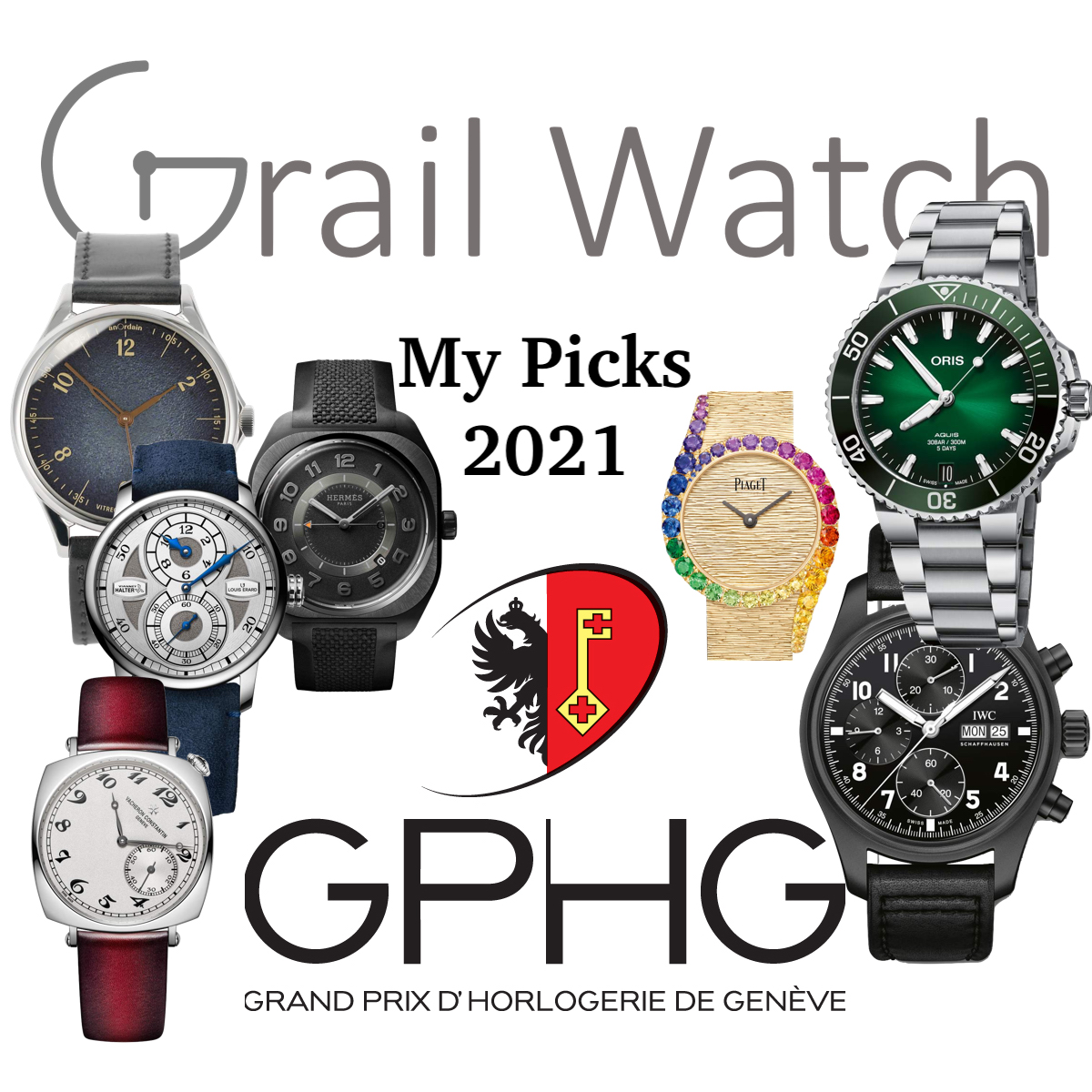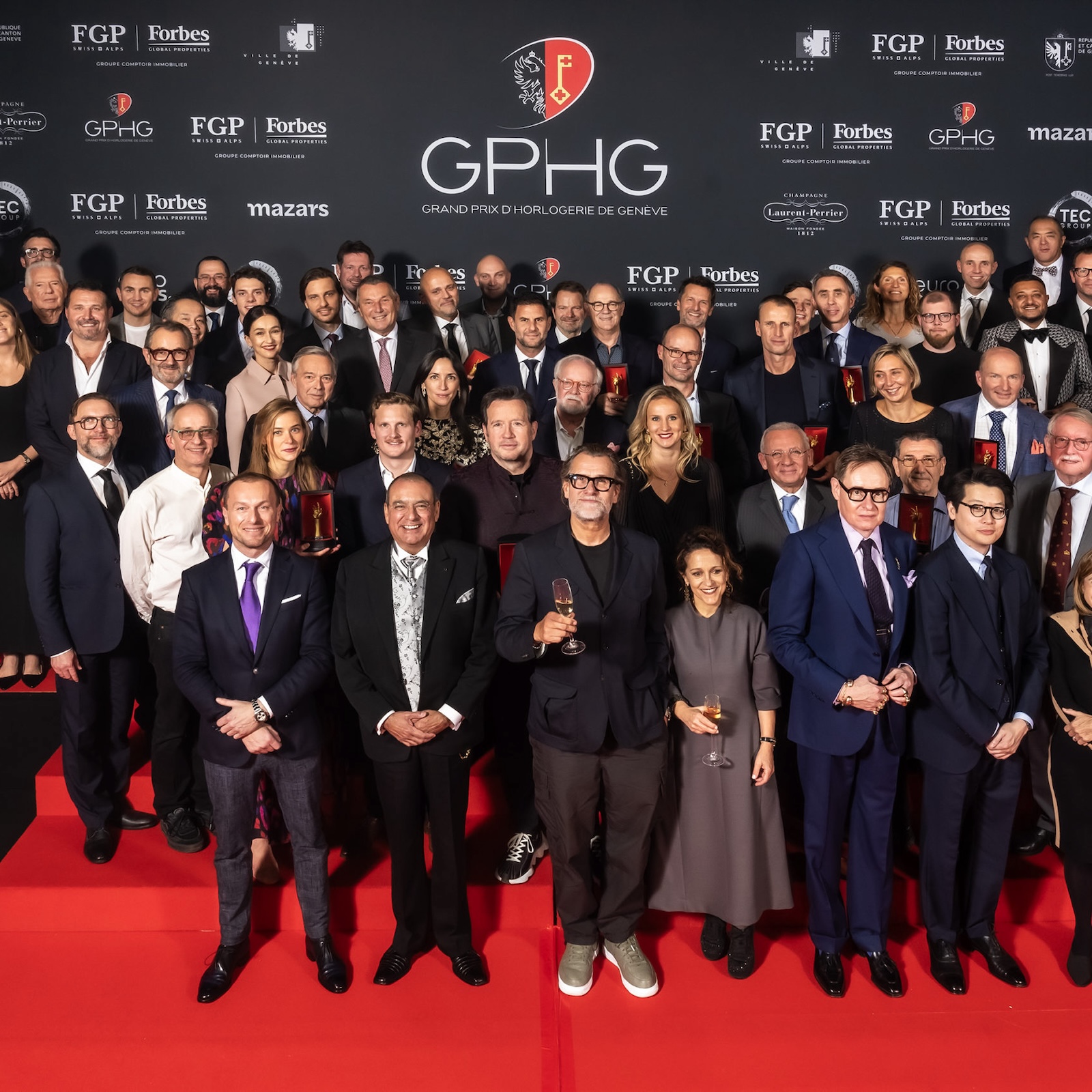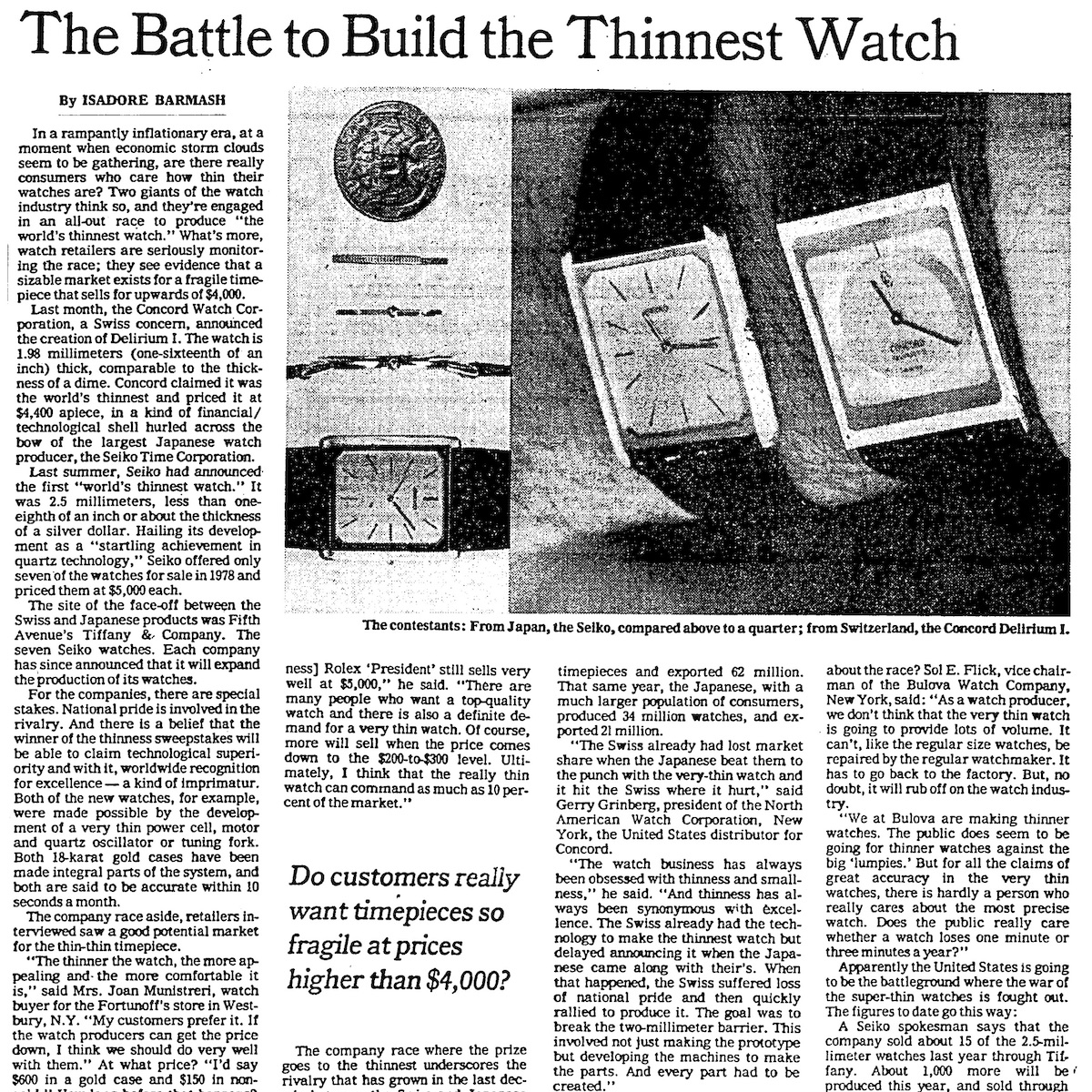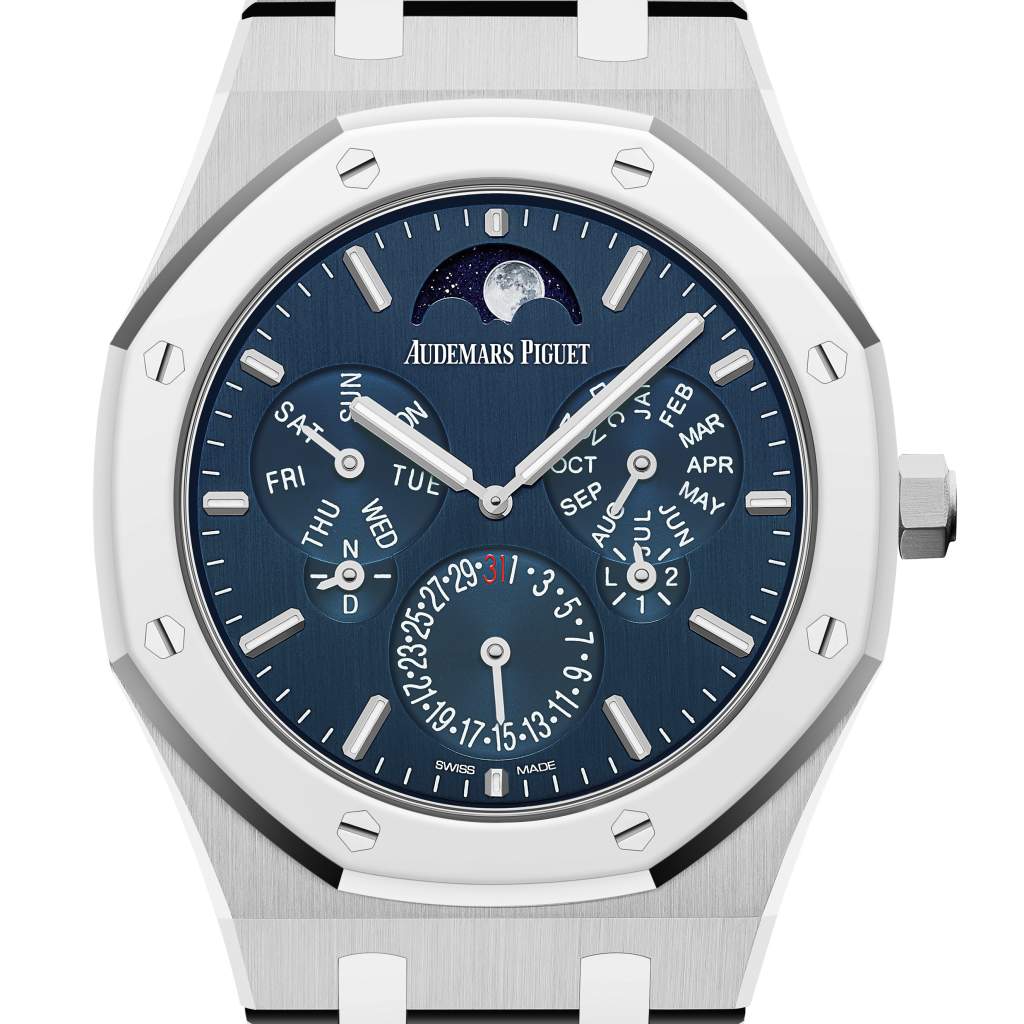The Grand Prix d’Horlogerie de Genève ceremony took place yesterday, November 12, 2020. Although attendance was limited to winners and helium-filled balloons, the ceremony once again proved both the importance and self-importance of Geneva as a center for the luxury watch industry. Although most of the prizes went against my choices, some were well-deserved and no one asked for my vote in any case!

Grand Prix d’Horlogerie de Covid
There is no headline in 2020 more important than the global Coronavirus pandemic, and it has affected every aspect of the world. In the horology industry, it finally put the Big Watch Shows out of their misery (though greed and infighting helped) and it has threatened the fortunes and fates of many well-known companies. With Swiss watch exports off by more than half, the luxury groups are hurting and the independents are on the bring of insolvency. One would not have been surprised if the GPHG, or at least their award ceremony, was also curtailed.
Yet, come November, the Grand Prix d’Horlogerie de Genève ceremony returned. Two more hours of self-importance, self-congratulation, and selective amnesia. I say this not as a criticism but as a fact: It is impossible to enjoy and celebrate luxury watches without choosing to ignore the fact that the industry is even more exclusive than its products, which are only accessible to perhaps 1% of the world population. The two “low rent” prize categories neatly stratify the industry further: The CHF 4,000 ceiling of the Challenge prize is all that even most enthusiasts can hope for, the CHF 10,000 Petite Aiguille winners summarizing the broad “luxury watch” category, and all the other entries out of reach for all but the 1% of the 1%.
Perhaps the most surprising part of the GPHG is the continued reminders from industry insiders themselves of these issues. Davide Traxler, CEO of Parmigiani Fleurier, spoke of the need for the industry to look beyond the mountains of the Swiss Jura even as he was fêted for a watch designed for the big-money watch buyers in the Arab world. And the grand prize was claimed by a female CEO, another welcome sight in the male-dominated industry. But the Swiss focus remained: The presence of two watches each from Seiko, Ming, and Kurono is undercut by the fact that they didn’t win a single prize.

Still, we celebrate horology, and we marvel at the accomplishments of the field. Most of the best fruits of human accomplishment are limited to the few and the rich, and watches cannot be expected to be any different. And it is genuine and charming to see so much praise lavished on the watchmakers who make these remarkable pieces possible, a frequent and welcome refrain throughout the ceremony. Having met the people who build and maintain these watches, I can say that they represent our diverse world better than one would think from the moneyed public face. Even if the watches themselves are as unthinkably out of reach as the half-million-dollar Piaget Altiplano Ultimate Concept that took the top prize, we can marvel at the work and the design.
Aiguille d’Or Grand Prix: Piaget Altiplano Ultimate Concept


It would be hard to argue that Piaget did not deserve the top prize. The ultra-thin Altiplano series is a remarkable accomplishment, both technically and aesthetically, and represents an enduring quest to build the thinnest possible watch. This has been a two-horse race in the last decade, with Bulgari’s Finissimo range knocking down record after record, but exclusive and thin watches are the signature of Piaget. This is the third Altiplano to win a prize, with the XL taking the defunct “Extra-Plate” (“ultra-thin”) award in 2003 and the Chrono winning its category in 2015. Bulgari has also won three times with a Finissimo watch, but the steel automatic model nominated this year failed to take home the Men’s Watch award.

Image: Europa Star EJW 42, 1957
The Altiplano Ultimate Concept is the latest iteration of a design that dates back over 50 years, to the legendary Cal. 9P shown at the Basel Fair in 1957. One can think of this award as recognition for decades of work, not just the 4 years the company worked on this particular model. Indeed, the architecture of the current Ultimate Concept movement is reminiscent of that historic calibre but incorporates innovations from many decades. It owes as much to the Jean Lassale Cal. 1200 of 1976, the patents of which Piaget licensed in the 1980, for the flying wheel design, and to the Delirium, which inspired the caseback-as-mainplate concept. But it was the original Altiplano 900P, introduced at SIHH in 2014, that first combined these elements inside Piaget’s workshops.
Although the Ultimate Concept is quite different technically, it shares the 900P concept, with an integrated ultra-thin movement embedded into the caseback. Introduced at SIHH in 2018, the Piaget Altiplano Ultimate Concept took a few years to perfect, produce, and win the highest award in watchmaking. As both a celebration of the brand and its accomplishments and of this particular watch, this award is well-deserved.

If I had been on the jury, however, I would likely have overlooked the historic Piaget. Instead, I would have been dazzled by the wild MB&F HM10 Bulldog, gorgeous MB&F Legacy Machine Thunderdome, or the technical masterpieces from Armin Strom or Ferdinand Berthoud. But I think my vote ultimately would have gone to a legendary collaboration between H. Moser & Cie and MB&F, the Endeavour Cylindrical Tourbillon. This watch took the Audacity Prize in 2020, but could easily have become the sixth watch ever to claim two prizes at the ceremony.
Petite Aiguille: Breitling Superocean Heritage ’57 Limited Edition II
Breitling took home two trophies from the Grand Prix d’Horlogerie de Genève in 2020, and this is all the more remarkable because the brand has never before won a prize. Perhaps the company never before submitted a watch (a necessary step that somewhat undermines the legitimacy of the GPHG) or maybe, as CEO Georges Kern reminded us repeatedly during the ceremony, this is the result of the divergence between Francophone Switzerland (Geneva) and German-speaking Switzerland (Zürich). More likely, the awards reflect the new marketing and product efforts of Breitling under Kern following his takeover of the company three years ago.

The “rainbow” limited edition version of the Superocean Heritage ’57 II is directly tied to the pandemic, with Breitling donating CHF 500,000 to charities supporting international healthcare workers. Given this connection, it would have been hard for the image-conscious jury to snub this watch. But that’s not the only reason it won.


Image: Europa Star EJW 79
Part of the Heritage lineup within the Superocean line, this model specifically recalls the classic dive watches of the 1950s, and looks quite a lot like the Blancpain Fifty Fathoms as a result. But Breitling’s bona fides are intact, since the Superocean name was used on watches in that period, and they definitely did include some of the most interesting details of this new model! Notable are the extremely unusual trapezoid-over-circle markers, seen in the 1963 chronograph at right, which are a signature element of this limited edition model. The simple minute markers and plain bezel are also similar, as is the overall case shape and the “mountain” hour hand. Some elements are changed, including a visibly-wider bezel and the addition of a lume pip over the triangle, but the result is a faithful-but-modern dive watch. And it’s quite lovely in person, as I discovered last month at my local Authorized Dealer.
The Superocean also features an excellent movement developed by Tudor and supplied in exchange for Breitling’s own in-house B01 chronograph calibre. Although not much from a specification perspective, a close look at the movement shows a modern design with much attention to detail. And it has proven to be a reliable, durable, and accurate movement in the similar Tudor Black Bay models.

If I had been on the GPHG panel, I might have given the nod to the Habring2 Chrono Felix Panda. Nearly as cheap as the Breitling, this monopusher chronograph ticks all the boxes for me, with the vintage look and astounding craftsmanship. And the movement, based on the venerable Valjoux 7750 designed by Edmond Capt, is transformed by Habring and their suppliers. This is something special, and is the only of the Petite Aiguille nominees I would be tempted to buy. Remember that this is the Petite Aiguille, which requires the watch to sell for between CHF 4,000 and CHF 10,000, the heart of the luxury segment. Which would you rather buy?

The other Breitling model honored today is simply not my cup of tea. Winning the Diver’s category, the Superocean Automatic 48 Boutique Edition is almost everything I dislike about Breitling today. The generic “techno” design has little to recommend it, and the execution is excessively busy. Although a reasonably-sized watch, it nevertheless shows a jumble of markers. And the dark ceramic and green dial, which once would have been impressive, simply look derivative in 2020. Even the B17 movement, based on the ETA 2824-2, is a yawner. The only interesting thing about this watch is the bezel lock, which is a true Breitling innovation dating to the 1960s.
Anything else in the Diver’s category would have been a better choice, but my vote would have gone to the Ming 18.01, which transforms that company’s design language in a remarkable yet consistent way. Ming took home the Horological Revelation prize last year for the 17.06 Copper, and I remain impressed by what that company has done since. It would have been nice for Grand Seiko to take home a trophy as well, given the excellent 9RA5 Spring Drive movement and impeccable execution.
Challenge Watch: Tudor Black Bay Fifty-Eight

The Challenge prize was established in 2018 to recognize lower-priced watches below CHF 4,000. So far, it has been won by Nomos, Tudor, and now Tudor again. It’s hard to argue that these companies offer excellent value for the money, and their products are attractive at any price. But did the GPHG really need to pick the most common Tudor when there are so many wonderful alternatives?
Let’s look at what was selected. Tudor has been the the Volkswagen to Rolex’s Audi for decades, and was specifically called “the junior member of the Rolex family” back in the 1950s. And that’s exactly what the Black Bay Fifty-Eight is: A junior Submariner with a modern feel but the look of a classic big crown model.
The news at Tudor is the development of in-house movement capability. “Papa Rolex” never opened the doors to their Bienne movement factory to “Junior Tudor” but the company recently began establishing its own production. A new joint venture known as Kenissi produces movements in association with Chanel and Breitling, including the movement in the Superocean Heritage above. But the 2018 Black Bay Fifty-Eight uses the newer Cal. MT5402, which offers a longer power reserve than most common movements.

Don’t get me wrong: The Tudor Black Bay Fifty-Eight is an excellent watch and a great value, at just $3,700 MSRP here in the USA. But it’s one of the least-interesting watches nominated, and thus the least-deserving of an award in 2020. Given the mediocre competition in this category, I would have picked the Louis Erard, a wild collaboration with the great Alain Silberstein. Although I love the Ming brand, their 27.01 doesn’t quite ring the right bells for me, seeming more to be a cost-reduced offering than a truly great model in its own right. I imagine you might know what I think of the Breitling Endurance Pro after reading the previous section, and the Behrens Rotary is just a huge question mark to me. Then there’s Kurono Tokyo: Not having seen them in person I can’t be sure, but this does not look like luxury watch finishing to me.
The Grail Watch Perspective: Hits and Misses at GPHG 2020
I can’t argue with the headline award at the Grand Prix d’Horlogerie de Genève: Piaget deserved their win with the Altiplano Ultimate Concept. Still, the watch is a few years old and I find myself wondering if it truly represents where the industry is in 2020. Breitling’s pandemic pledge Superocean Heritage ’57 is a surprising bright spot for me, since I don’t think much of the brand overall. But I am not happy with their other Superocean win, or the selection of the ho-hum Tudor Black Bay Fifty-Eight in the Challenge category. In my next post, I’ll take a look at some of the other watches that were honored at the Grand Prix d’Horlogerie de Genève this year.






Leave a Reply